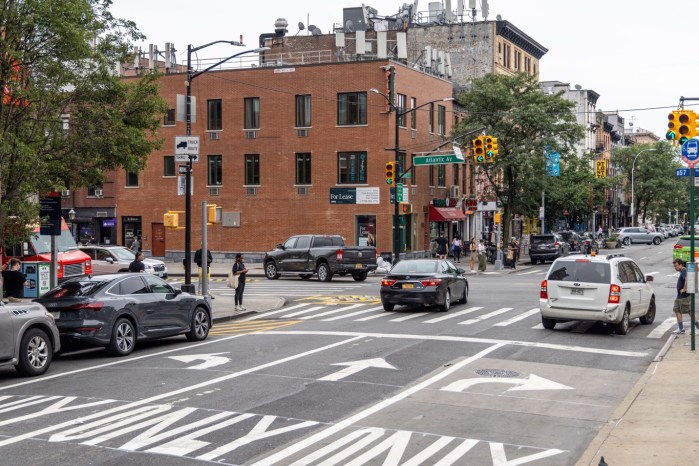Like a car stuck in park, the city has failed to move on its promise to restore a small pedestrian path in a Brooklyn Heights park to its owners and intended users: the public.
Despite a spring deadline to bar Supreme Court judges from using a sliver of Columbus Park as a parking lot, the dozen or so personal vehicles remain in the cordoned-off pedestrian path near Adams and Joralemon streets.
The section of the park that the city has promised to return to the public is only a third or so of the space occupied by the judges. It lies between a larger park-turned-lot and a park walkway used by Borough President Markowitz’s office as a parking lot.
The city insists that before the sliver can be returned to Brooklynites, it must first create another “curb cut” or access point to the larger lot that occupies the park space between Borough Hall and Adams Street.
Phil Abramson, a Parks Department spokesman, insisted that bureaucrats were hard at work on the problem.
“Officials met last week on-site to review proposed locations for a curb cut, and the engineers are examining the logistics of installing one,” said Abramson.
But he issued a similar response back in January, when he told The Brooklyn Paper, “The pedestrian path will be restored this spring.”
Spring has passed, and summer is nearly gone, but Abramson would only refer questions about the delay to the Department of Transportation. He wasn’t the only one to finger-point. Courts spokesman David Bookstaver said his agency gave “input” about the judges’ “security needs” a number of months ago. But he wouldn’t discuss the security needs of the judges’ vehicles, citing court policy.
DOT spokeswoman Molly Gordy took the blame for the delay. She said traffic engineers had found a location to install a new curb cut, but then discovered that it was “too close to a busy intersection to be safe.”
“We found another location [for the curb cut] further from the intersection, but there was a subway grating there, and a tree,” said Gordy.
Gordy did not offer a timeline for when the epic street-access issue would be solved. But once it is, she said the project would bounce back to the Parks Department, which would, in turn, install the controversial curb cut.
And so the judges — who, like other New York commuters, have a functioning mass-transit system at their disposal — have gotten an extension on their eight-year use of the public space.
Yes, according to Judy Stanton, the executive director of the Brooklyn Heights Association, it was back in 1999 when then–Administrative Court Judge Michael Pesce promised the neighborhood that the situation would only be temporary, until the State Supreme Court’s new building at 330 Jay St. was complete.
Stanton is, of course, eager to see the cars removed from the sliver of a pathway, but not at the expense of turning the other parking lot into a permanent space.
“We do not want them to succeed in getting a curb cut,” said Stanton. “[A curb cut] would really amount to the taking of a park. And, it’s an extremely busy sidewalk.”























